The present continuous tense (also called present progressive) is used for:
-
Actions happening right now
-
Activities or projects that are in progress
-
Temporary events or situations
-
Future plans
-
Actions happening right now
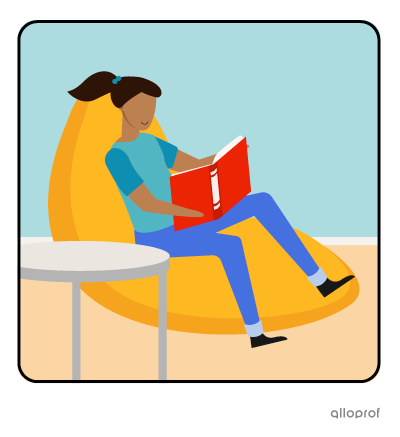
Right now, Sarah is devouring the last chapter of a very interesting novel.
-
Activities or projects in progress

She is reading lots of books at the same time. She doesn’t always finish them.
-
Temporary events or situations
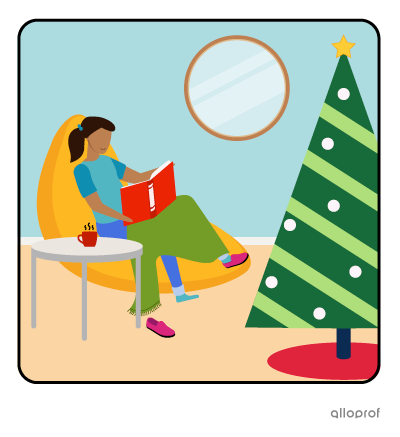
She is reading all day during the holidays, much more than she usually does.
-
Future plans

Tomorrow, she is buying the sequel of her favourite novel at the local bookstore.
Some keywords and phrases are used to signal the present continuous.
|
|
|
|
The present continuous tense can also be used for:
-
Ongoing events at a specific time
The present continuous can be used for events that are usually not finished when another happens, or at a specific time.
For example:
Usually, Sarah’s parents are still working when she comes back home from school.
-
Annoying habits
The present continuous can be used to describe an annoying habit, something someone is always doing and that can be irritating.
For example:
Sarah’s little brother, Kyle, is constantly trying to be the center of attention.
Points to remember when forming affirmative sentences

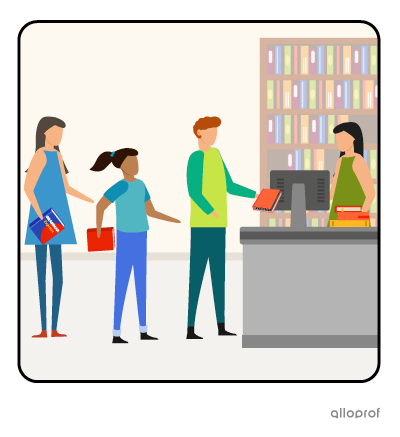
Sarah is standing in line to pay.
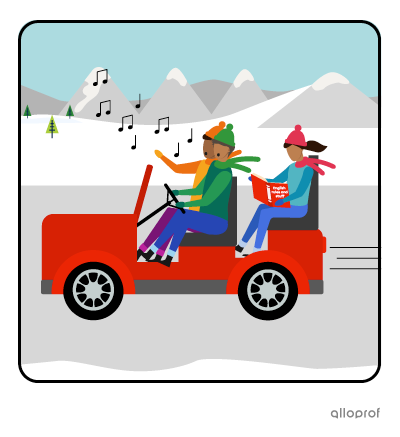
Her parents are singing loudly in the car while she is trying to read.
Points to remember when forming negative sentences in the present continuous

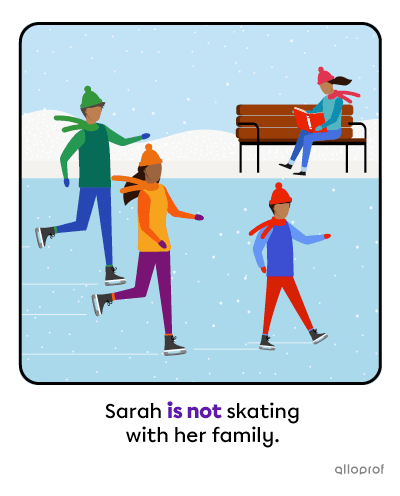
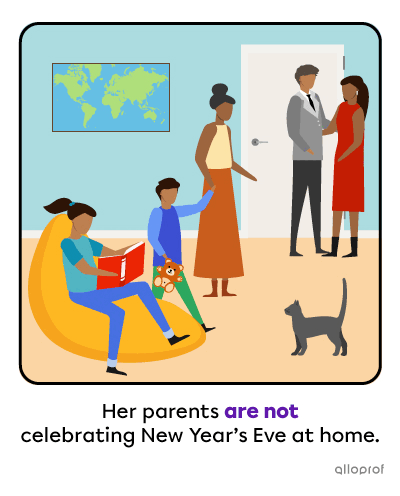
The negative is often used with contractions.
-
answered by yes or no
-
answered with information
-
never answered by yes or no
-
use question words
Points to remember when forming questions in the present continuous:
-
Start with the auxiliary verb to be (am/are/is).
-
Use the base form of the verb + ing.
For information questions only: -
Place a question word at the beginning.

- Yes/no questions
|
To be |
subject |
verb + ing |
object* ? |
|---|---|---|---|
|
Are |
you |
working |
at the moment? |
|
Is |
he |
playing |
in the snow right now? |
- Information questions
|
Question word |
to be |
subject |
verb + ing |
object* ? |
|---|---|---|---|---|
|
Where |
are |
they |
going? |
|
|
When |
is |
she |
coming |
back home? |
*The object is used only when necessary.